As a versatile and nutritious ingredient, bulgur wheat is often used in various Middle Eastern and Mediterranean dishes, such as tabbouleh and kibbeh.
However, if you are looking for a gluten-free or low-carb alternative to bulgur wheat, or you simply ran out of it and need a substitute, there are plenty of options available.
In this article, I will explore some of the best substitutes for bulgur wheat and provide tips on how to use them in your cooking.
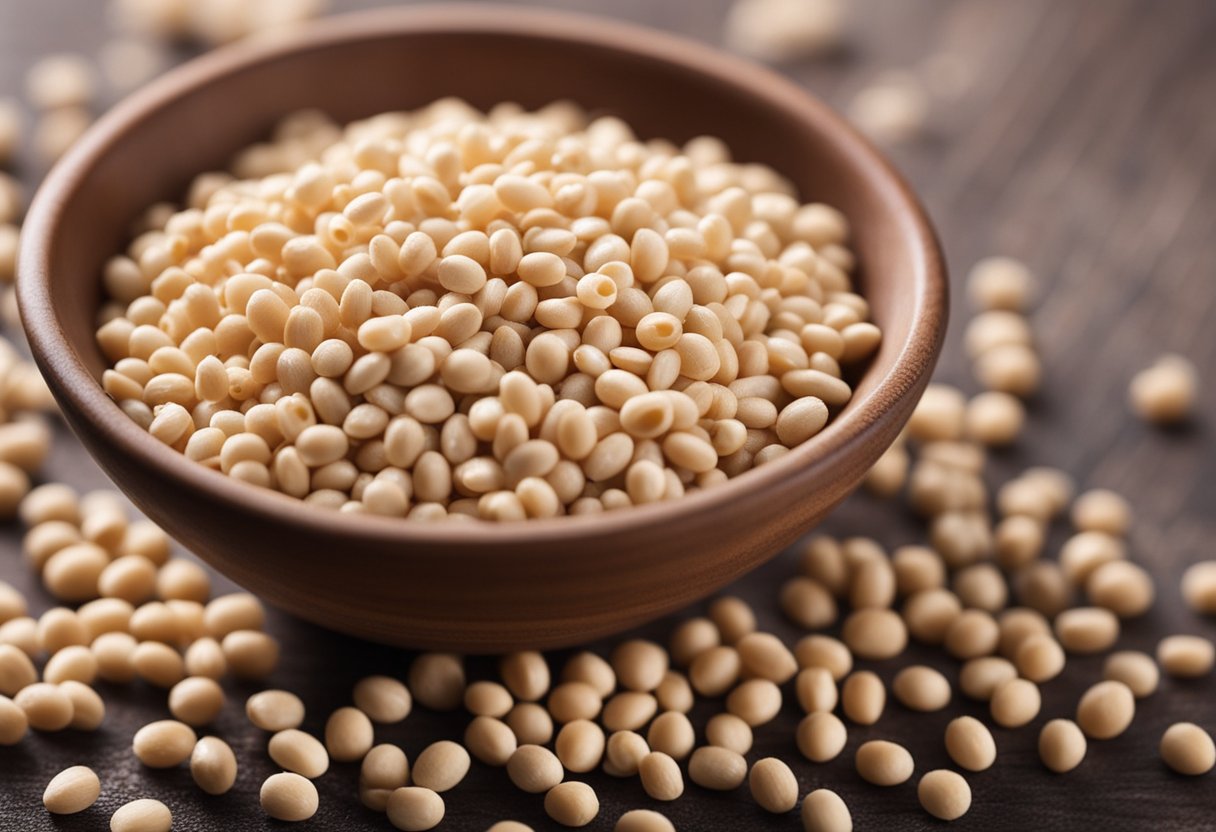
Understanding the characteristics of bulgur wheat is important when choosing a substitute. Bulgur wheat is made from cracked wheat berries that have been parboiled and dried. It has a nutty flavor and a chewy texture, and it is often used in salads, pilafs, and stuffing.
When substituting bulgur wheat, you should look for an ingredient that has a similar texture and flavor profile and can be cooked in a similar way.
Some substitutes may also offer additional health benefits, such as higher protein or fiber content.
Key Takeaways
- Bulgur wheat is a popular ingredient in Middle Eastern and Mediterranean cuisine, but there are plenty of substitutes available if you need a gluten-free or low-carb alternative or simply ran out of it.
- When choosing a substitute for bulgur wheat, look for an ingredient that has a similar texture and flavor profile and can be cooked in a similar way.
- Some substitutes may offer additional health benefits, such as higher protein or fiber content, so it’s worth experimenting with different options.
Understanding Bulgur Wheat
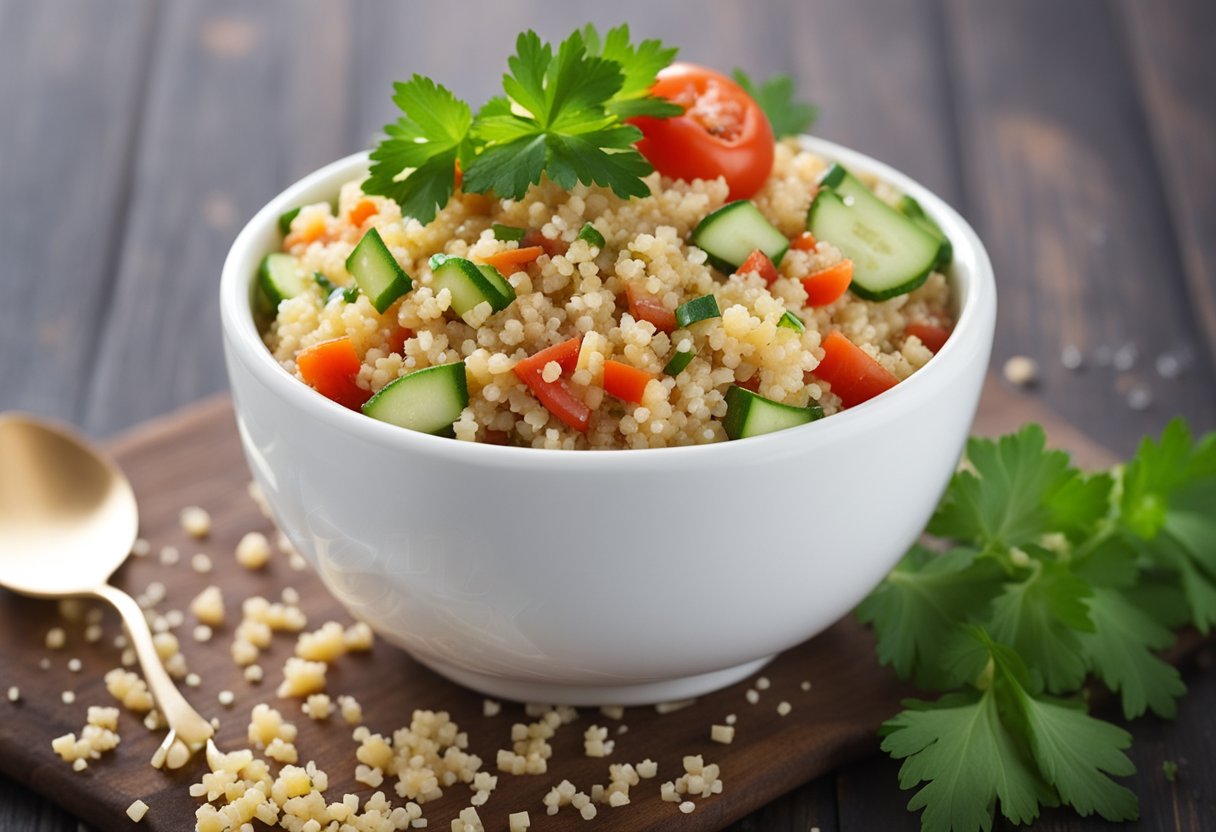
Bulgur wheat is a nutritious grain that is a staple food in many parts of the world. It is made by boiling and drying whole wheat grains, which are then cracked into small pieces. This process gives bulgur its unique texture and nutty flavor.
Bulgur is a type of wheat, specifically durum wheat, which is a hard wheat variety that is high in protein and gluten. This makes bulgur wheat a good source of dietary fiber and a great addition to a healthy diet.
One of the benefits of bulgur wheat is that it is a quick-cooking grain, making it a convenient ingredient for busy cooks. It can be used in a variety of dishes, from salads to stews, and is a versatile ingredient in the kitchen.
Bulgur wheat is also a superfood that is rich in nutrients and has many health benefits. It is high in fiber, which is important for digestion and can help reduce the risk of chronic diseases. It is also a good source of protein, vitamins, and minerals.
In addition to its nutritional benefits, bulgur wheat is also a delicious ingredient that adds texture and flavor to many dishes. Its nutty flavor and chewy texture make it a popular ingredient in Middle Eastern and Mediterranean cuisine.
Overall, bulgur wheat is a nutritious and delicious grain that is worth incorporating into your diet. Whether you are looking for a healthy and nutritious grain or a flavorful ingredient to add to your cooking, bulgur wheat is a great choice.
Why Substitute Bulgur Wheat
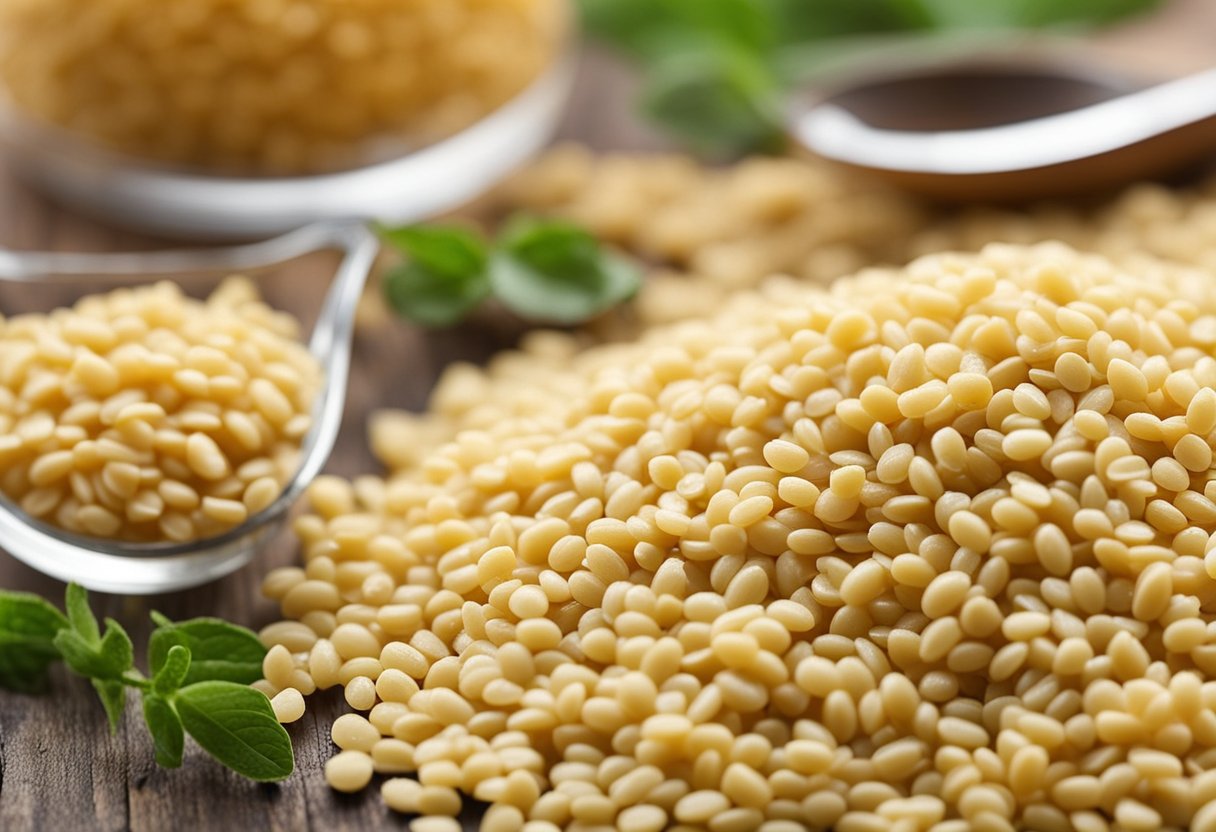
As a versatile and nutritious grain, bulgur wheat is a staple in many dishes. However, there are several reasons why one might need to substitute bulgur wheat in a recipe.
For those with gluten sensitivity or celiac disease, bulgur wheat may not be an option due to its gluten content. In this case, there are several gluten-free alternatives available, such as quinoa, rice, or millet, that can be used instead.
In addition to gluten concerns, some individuals may choose to substitute bulgur wheat to increase the variety of nutrients in their diet.
While bulgur wheat is a good source of fiber, magnesium, and iron, other grains and pseudo-grains like quinoa, amaranth, and buckwheat offer similar or even higher levels of these minerals, as well as additional vitamins and amino acids.
Another reason to substitute bulgur wheat is simply to mix up the flavors and textures in a dish. For example, couscous or rice may be used in place of bulgur wheat in a salad or pilaf to create a different mouthfeel or taste.
Overall, there are many reasons why one might choose to substitute bulgur wheat in a recipe, from gluten concerns to a desire for variety in nutrients or flavor. With a wide variety of alternatives available, it’s easy to find a substitute that fits your needs and preferences.
Grain Substitutes for Bulgur Wheat
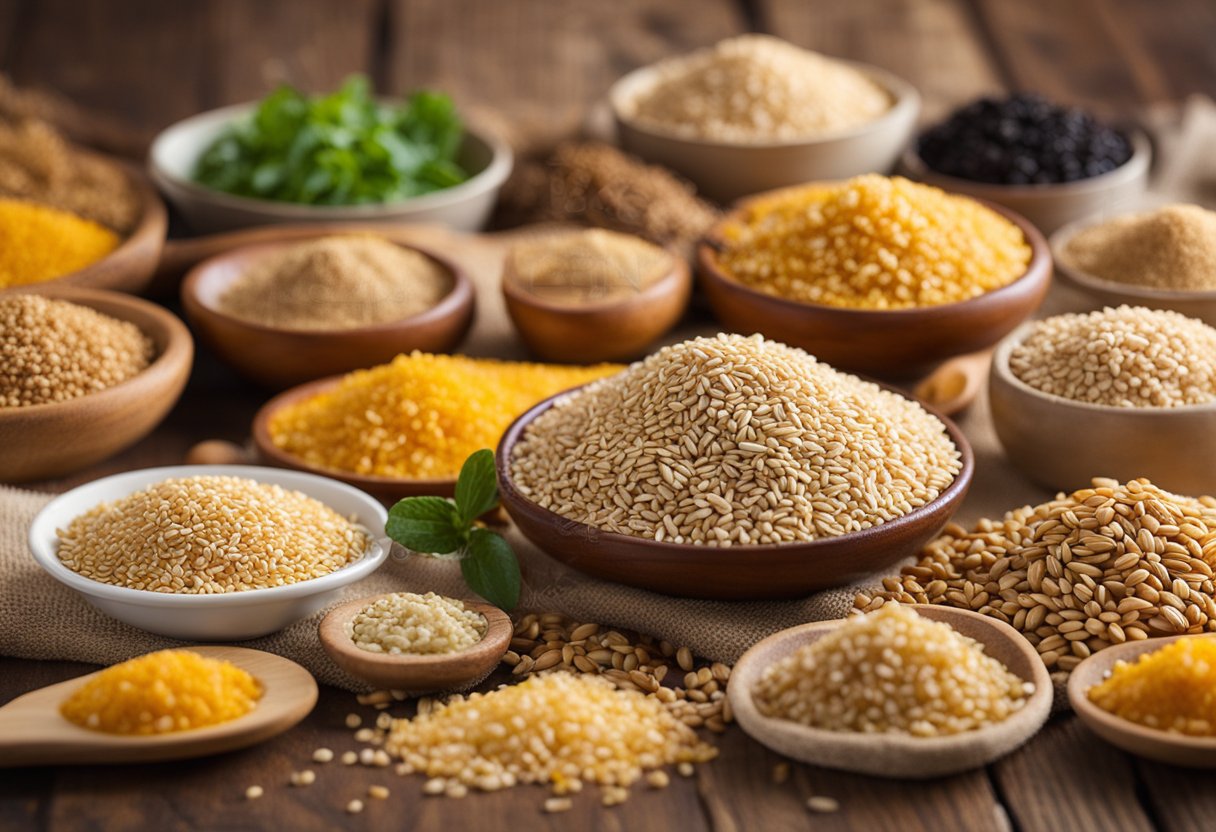
As a nutritionist, I often recommend bulgur wheat as a healthy grain option. However, there are times when it may not be available or suitable for certain dietary needs. In those cases, there are several grain substitutes for bulgur wheat that you can use.
Quinoa
Quinoa is a popular substitute for bulgur wheat due to its similar texture and nutty flavor. It is also a gluten-free option and an excellent source of protein. Quinoa can be used in tabbouleh, salads, and pilafs.
Rice
Rice is another popular substitute for bulgur wheat. Brown rice has a nutty flavor and chewy texture that is similar to bulgur wheat, while white rice has a milder taste and softer texture. Rice can be used in soups, stews, and casseroles.
Buckwheat
Buckwheat is a gluten-free grain that has a nutty flavor and a slightly crunchy texture. It is an excellent source of protein and fiber. Buckwheat can be used in salads, pilafs, and as a breakfast cereal.
Farro
Farro is an ancient grain that has a chewy texture and a nutty flavor. It is an excellent source of protein, fiber, and several essential nutrients. Farro can be used in soups, stews, and salads.
Couscous
Couscous is a small, round grain that has a mild flavor and a fluffy texture. It is a popular substitute for bulgur wheat in tabbouleh and other Middle Eastern dishes. Couscous can also be used in salads and pilafs.
Millet
Millet is a gluten-free grain that has a mild flavor and a slightly crunchy texture. It is an excellent source of protein, fiber, and several essential nutrients. Millet can be used in salads, pilafs, and as a breakfast cereal.
Amaranth
Amaranth is a gluten-free grain that has a nutty flavor and a slightly crunchy texture. It is an excellent source of protein, fiber, and several essential nutrients. Amaranth can be used in salads, pilafs, and as a breakfast cereal.
Barley
Barley is a chewy grain that has a nutty flavor and a slightly sweet taste. It is an excellent source of fiber and several essential nutrients. Barley can be used in soups, stews, and salads.
Cracked Wheat
Cracked wheat is made from whole wheat berries that have been cracked into smaller pieces. It has a nutty flavor and a slightly chewy texture. Cracked wheat can be used in salads, pilafs, and as a breakfast cereal.
Teff
Teff is a gluten-free grain that has a nutty flavor and a slightly crunchy texture. It is an excellent source of protein, fiber, and several essential nutrients. Teff can be used in salads, pilafs, and as a breakfast cereal.
Orzo
Orzo is a small, rice-shaped pasta that has a mild flavor and a slightly chewy texture. It is a popular substitute for bulgur wheat in tabbouleh and other Middle Eastern dishes. Orzo can also be used in soups, salads, and casseroles.
Bamboo Rice
Bamboo rice is a short-grain rice that has a nutty flavor and a slightly chewy texture. It is an excellent source of fiber and several essential nutrients. Bamboo rice can be used in soups, stews, and salads.
Kamut
Kamut is an ancient grain that has a nutty flavor and a slightly chewy texture. It is an excellent source of protein, fiber, and several essential nutrients. Kamut can be used in soups, stews, and salads.
Freekeh
Freekeh is a roasted grain that has a smoky flavor and a slightly chewy texture. It is an excellent source of protein, fiber, and several essential nutrients. Freekeh can be used in soups, stews, and salads.
Pearl/ Pearled
Pearl or pearled grains are grains that have had their outer husk removed, resulting in a quicker cooking time and a softer texture.
Pearl barley and pearl couscous are popular substitutes for bulgur wheat in tabbouleh and other Middle Eastern dishes. Pearl grains can also be used in soups, stews, and salads.
In conclusion, there are several grain substitutes for bulgur wheat that you can use in your recipes. These grains offer a variety of textures, flavors, and nutritional benefits. Experiment with different grains to find the perfect substitute for your needs.
Non-Grain Substitutes for Bulgur Wheat
As a grain, bulgur wheat is a popular ingredient in many dishes, but it may not be suitable for everyone. Fortunately, there are several non-grain substitutes for bulgur wheat that can be used in recipes.
One option is pasta, which can be used as a substitute for bulgur wheat in salads or other dishes. Pasta is available in a variety of shapes and sizes, and it can be made from wheat, rice, or other grains. It is also easy to cook and can be seasoned to taste.
Another option is fruit seeds, such as pomegranate seeds or cranberries. These can add a sweet and tangy flavor to dishes and provide a crunchy texture. They are also a good source of vitamins and antioxidants.
Shelled hemp seeds are another non-grain substitute for bulgur wheat. They are high in protein, fiber, and healthy fats, and can be used in a variety of dishes. They have a nutty flavor and can be added to salads, smoothies, or other recipes.
When using non-grain substitutes for bulgur wheat, it is important to consider the texture and flavor of the ingredient.
It may be necessary to adjust the cooking time or seasoning to achieve the desired taste and texture. However, with a little experimentation, it is possible to find a substitute that works well in your favorite recipes.
Cooking with Bulgur Wheat Substitutes
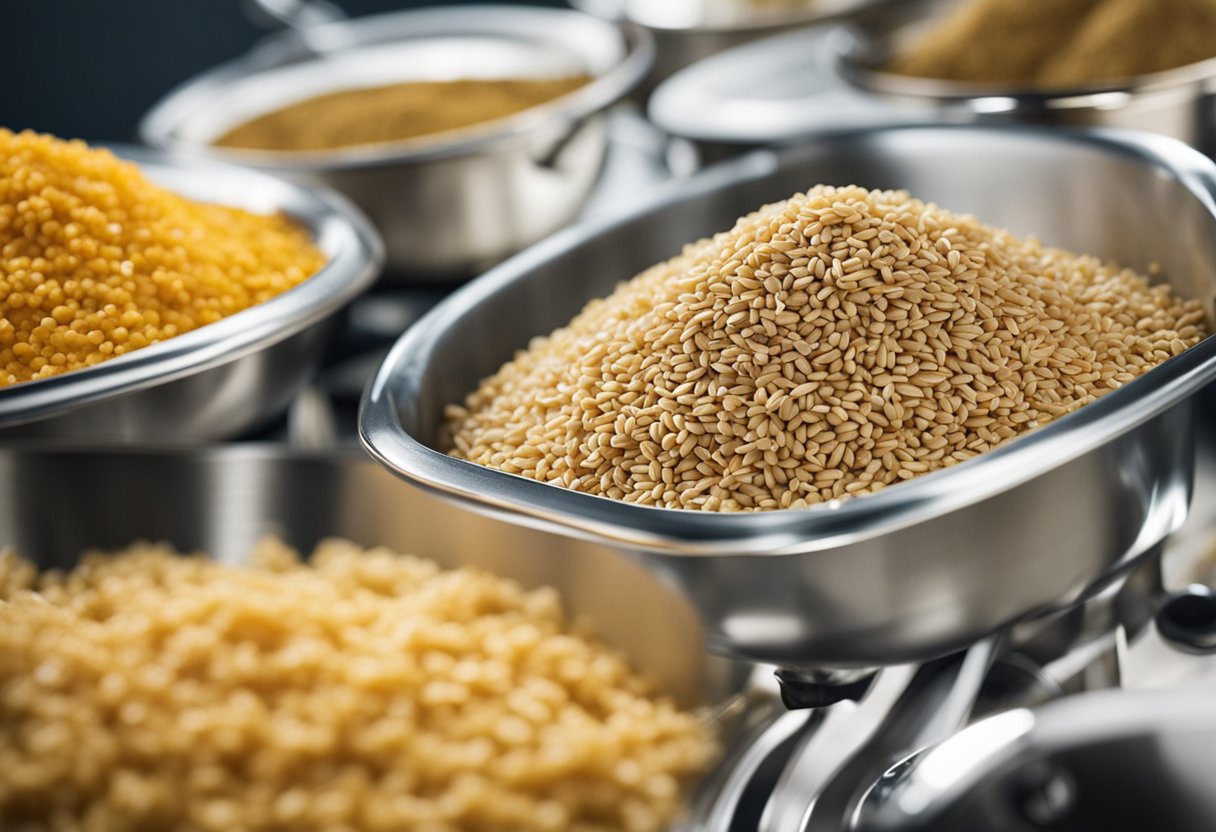
As a versatile ingredient, bulgur wheat can be used in a variety of dishes, including salads, pilaf, soups, tabbouleh, stews, side dishes, curries, casseroles, risotto, tacos, stuffing, and even baking.
However, if you don’t have bulgur wheat on hand, there are several substitutes you can use that will still yield delicious results.
One of the best substitutes for bulgur wheat is quinoa. This gluten-free grain has a similar texture and nutty flavor to bulgur wheat, making it an excellent replacement in salads, soups, and side dishes.
Another great option is rice, which can be used to make pilaf, casseroles, and stews. Brown rice is a healthier alternative to white rice and has a nuttier flavor that pairs well with savory dishes.
If you’re looking for a heartier substitute, farro and barley are both excellent choices. Farro has a chewy texture and nutty flavor that works well in risotto and salads, while barley has a slightly sweeter taste and can be used in soups and stews.
For those who prefer gluten-free options, there are several substitutes available, including amaranth, buckwheat, and teff.
Amaranth has a slightly earthy flavor and can be used in salads and side dishes, while buckwheat has a nutty flavor and can be used in pilaf and casseroles. Teff is a tiny grain that has a slightly sweet and nutty flavor and is commonly used in Ethiopian cuisine.
When substituting bulgur wheat with any of these alternatives, it’s important to adjust the cooking time and liquid ratios accordingly. Each grain has a unique texture and cooking time, so be sure to follow the package instructions and adjust as needed.
Overall, there are many substitutes for bulgur wheat that can be used in a variety of dishes. Experiment with different grains and find the one that works best for your recipe.
Taste and Texture of Bulgur Wheat Substitutes
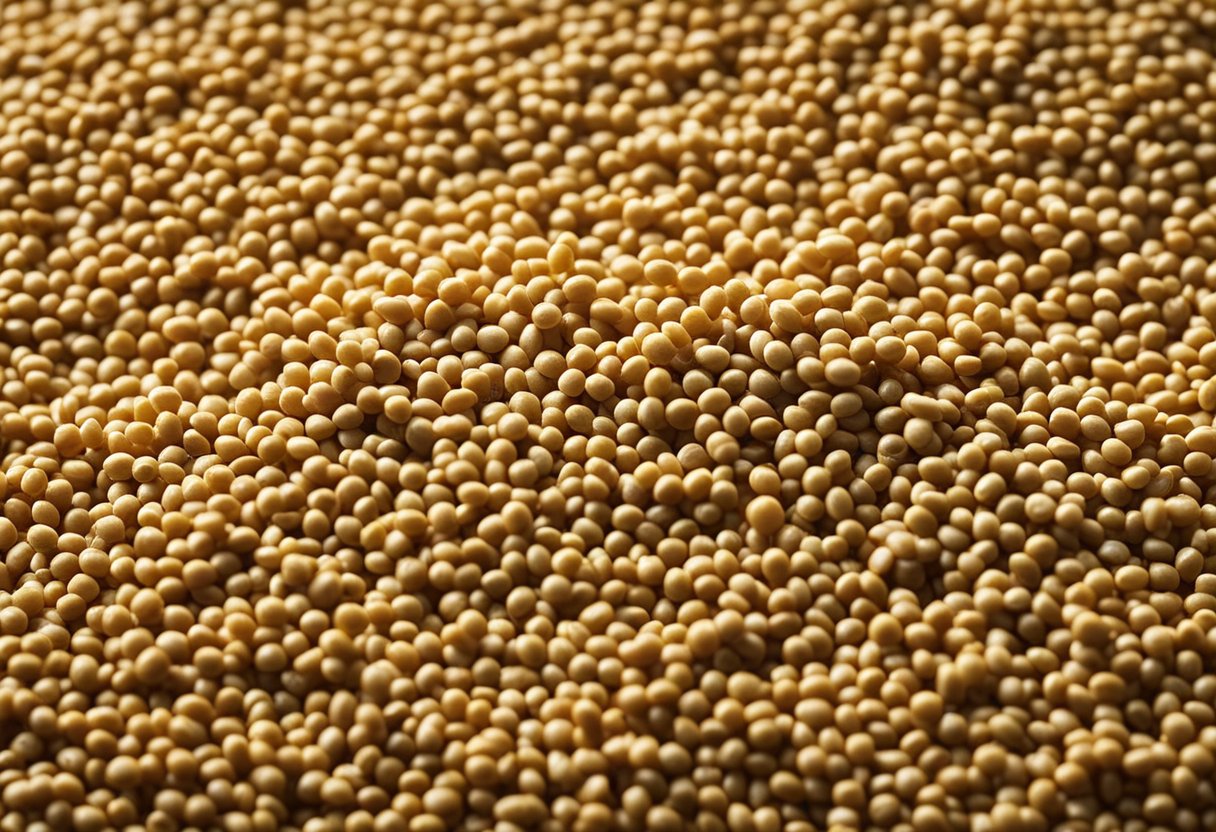
As someone who has tried multiple substitutes for bulgur wheat, I can confidently say that each one has its own unique taste and texture. While some substitutes may be more similar to bulgur wheat than others, all of them can be used to create delicious dishes.
One of the most popular substitutes for bulgur wheat is quinoa. Quinoa has a slightly nutty flavor and a fluffy texture, which makes it a great addition to salads or as a side dish.
Another great substitute is rice, which has a softer flavor than bulgur wheat but can be used in many of the same dishes.
For those looking for a nutty flavor similar to bulgur wheat, farro is a great option. It has a chewy texture and a sweet flavor that pairs well with roasted vegetables or in soups. Kamut is another option that has a nutty flavor and a texture similar to bulgur wheat.
If you’re looking for a sweet flavor, amaranth is a great substitute. It has a slightly sweet flavor and a creamy texture that makes it a great option for breakfast dishes or as a dessert.
Buckwheat is another option that has a sweet flavor and a fluffy texture, making it a great addition to pancakes or as a side dish.
Lastly, if you’re looking for a substitute with a peppery flavor, consider using quinoa. It has a slightly peppery flavor that pairs well with spicy dishes or as a substitute for bulgur wheat in tabbouleh.
Overall, while each substitute for bulgur wheat has its own unique taste and texture, they can all be used to create delicious dishes. Experiment with different substitutes to find the one that works best for you and your taste preferences.
Preparing Bulgur Wheat Substitutes
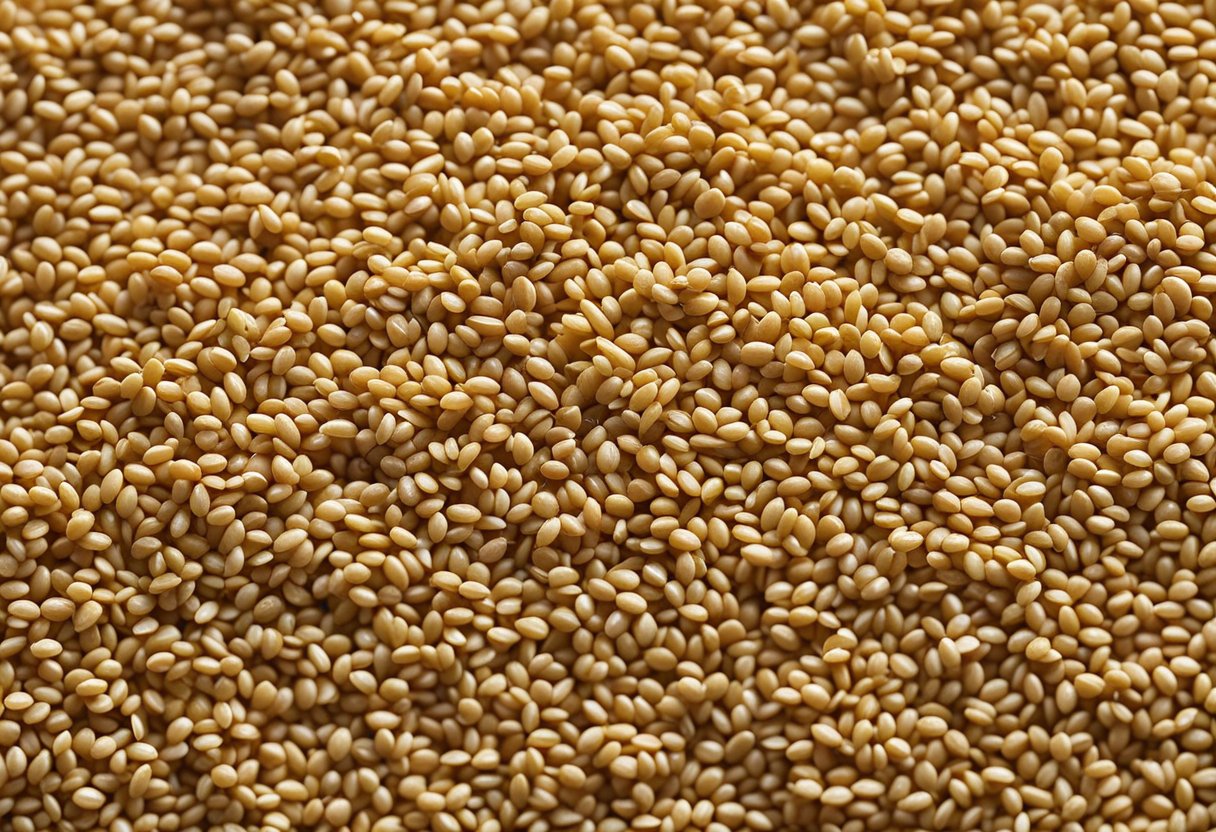
When preparing bulgur wheat substitutes, it’s important to keep in mind that different substitutes may require different preparation methods. Here are some general tips to keep in mind:
- Rinse: Just like with bulgur wheat, it’s a good idea to rinse your substitute before cooking it. This helps remove any debris or dirt that may be present.
- Water: The amount of water you use will vary depending on the substitute you’re using. For example, quinoa typically requires a 2:1 ratio of water to quinoa, while rice may require a 1.5:1 ratio.
- Salt: Adding a pinch of salt to the cooking water can help enhance the flavor of your substitute.
Once you’ve rinsed your substitute and measured out the correct amount of water, you can begin cooking it. Here are some general cooking instructions for some of the most popular bulgur wheat substitutes:
- Quinoa: Bring the quinoa and water to a boil in a saucepan, then reduce the heat and simmer for 15-20 minutes, or until the water has been absorbed and the quinoa is tender.
- Rice: Rinse the rice, then bring it and the water to a boil in a saucepan. Reduce the heat and simmer for 18-20 minutes, or until the water has been absorbed and the rice is tender.
- Wheat couscous: Bring the water to a boil, then add the wheat couscous and remove from heat. Cover and let sit for 5-10 minutes, or until the water has been absorbed and the couscous is tender.
- Buckwheat: Rinse the buckwheat, then bring it and the water to a boil in a saucepan. Reduce the heat and simmer for 20-25 minutes, or until the water has been absorbed and the buckwheat is tender.
- Millet: Rinse the millet, then bring it and the water to a boil in a saucepan. Reduce the heat and simmer for 20-25 minutes, or until the water has been absorbed and the millet is tender.
- Amaranth: Bring the amaranth and water to a boil in a saucepan, then reduce the heat and simmer for 20-25 minutes, or until the water has been absorbed and the amaranth is tender.
- Teff: Rinse the teff, then bring it and the water to a boil in a saucepan. Reduce the heat and simmer for 20-25 minutes, or until the water has been absorbed and the teff is tender.
- Farro: Rinse the farro, then bring it and the water to a boil in a saucepan. Reduce the heat and simmer for 25-30 minutes, or until the water has been absorbed and the farro is tender.
Remember to adjust the cooking time and water ratio as needed for your specific substitute. With these tips in mind, you’ll be able to prepare delicious dishes using bulgur wheat substitutes.
Conclusion

In conclusion, there are several substitutes for bulgur wheat that you can use in your recipes. Depending on your dietary requirements, taste preferences, and availability, you can choose from a variety of grains, seeds, and vegetables to replace bulgur wheat.
Quinoa is a popular and versatile substitute for bulgur wheat, as it has a similar texture and nutty flavor. Other grains like rice, couscous, farro, and millet can also work well in recipes that call for bulgur wheat.
Wheat berries are a great substitute for bulgur wheat if you want a chewy and nutty texture.
If you are looking for gluten-free options, you can try using buckwheat, amaranth, teff, or cauliflower rice instead of bulgur wheat. These substitutes offer different textures and flavors, but they can all be used in a variety of dishes, from salads to pilafs to stews.
When substituting bulgur wheat with other grains, it’s important to adjust the cooking time and liquid ratio, as different grains may require different amounts of water and time to cook. You may also need to adjust the seasoning and spices to suit your taste.
Overall, experimenting with different substitutes for bulgur wheat can be a fun and rewarding way to add variety and nutrition to your meals.
By trying out different grains, seeds, and vegetables, you can discover new flavors and textures that can enhance your cooking and your health.
Frequently Asked Questions
What are some alternatives to bulgur wheat in recipes?
If you are looking for a substitute for bulgur wheat, there are several options available. Quinoa, rice, wheat couscous, buckwheat, millet, amaranth, teff, and farro are all great alternatives to bulgur wheat.
Each of these grains has its own unique texture and flavor, so it’s important to choose the one that best fits your recipe.
How does the nutrition of bulgur wheat compare to other grains?
Bulgur wheat is a nutritious whole grain that is high in fiber, protein, and several vitamins and minerals. Compared to other grains, such as white rice and pasta, bulgur wheat is a healthier option.
However, other grains like quinoa and farro are also high in nutrients and can be a good alternative to bulgur wheat.
What are the differences between bulgur wheat and other grains like farro and quinoa?
Bulgur wheat, farro, and quinoa are all nutritious whole grains, but they have different textures and flavors. Bulgur wheat has a nutty flavor and a chewy texture, while farro has a more earthy flavor and a slightly chewy texture.
Quinoa has a mild flavor and a slightly crunchy texture. Each of these grains can be used in a variety of recipes and can be a good substitute for bulgur wheat.
Where can I find bulgur wheat substitutes in my local grocery store?
Most grocery stores carry a variety of whole grains, including bulgur wheat substitutes like quinoa, farro, and rice.
These grains can usually be found in the bulk foods section or in the rice and pasta aisle. If you are having trouble finding a specific grain, ask a store employee for assistance.
Can bulgur wheat be substituted for rice in recipes?
Yes, bulgur wheat can be substituted for rice in many recipes. However, keep in mind that bulgur wheat has a different texture and flavor than rice, so the final dish may have a slightly different taste and consistency.
What are some delicious recipes that use bulgur wheat substitutes?
There are many delicious recipes that use bulgur wheat substitutes. For example, you can use quinoa instead of bulgur wheat in a tabbouleh salad, or use farro in a grain bowl.
Rice can also be substituted for bulgur wheat in stuffed peppers or in a pilaf. Experiment with different grains to find the perfect substitute for your favorite bulgur wheat recipe.







